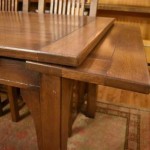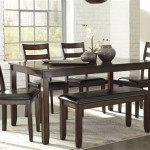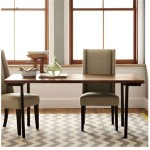Youth Chairs for Dining Tables: A Comprehensive Guide
Integrating a young child into family mealtime is a significant step in their development. It fosters social skills, encourages healthy eating habits, and creates lasting memories. However, ensuring the child is comfortable and safely positioned at the dining table requires careful consideration. A dedicated youth chair, specifically designed for use at a standard dining table, bridges the gap between booster seats and adult chairs, providing a comfortable and supportive seating option for children who have outgrown high chairs but are not yet tall enough to sit safely and comfortably in a regular chair.
The market offers a variety of youth chairs, each with unique features and benefits. Selecting the right chair depends on factors such as the child's age, weight, and individual needs, as well as the aesthetic of the dining area and the parents’ preferences regarding materials and safety features. This article explores the key features, benefits, and considerations when choosing a youth chair for the dining table, providing a comprehensive guide to assist parents in making an informed decision.
Key Features to Consider When Selecting a Youth Chair
Before purchasing a youth chair, it’s crucial to assess several key features to ensure suitability and safety. These features contribute significantly to the child's comfort, posture, and overall dining experience.
Adjustability: The adjustability of a youth chair is paramount. A chair that can be adjusted in terms of seat height, footrest position, and backrest angle accommodates a growing child. Height adjustability ensures the child's elbows are at the proper height for comfortable eating, while the adjustable footrest provides support and prevents dangling feet, which can cause discomfort and poor posture. Some chairs offer a reclining backrest, adding an extra layer of comfort, especially for younger children who may tire easily during longer meals.
Safety Features: Safety is non-negotiable. Look for chairs with a five-point harness system, particularly for younger children or those who are prone to wiggling. The harness should be easily adjustable and made of durable, comfortable material. A wide, stable base is also crucial to prevent tipping, especially if the child is active. Ensure the chair is constructed from non-toxic materials and has smooth, rounded edges to minimize the risk of injury. Compliance with relevant safety standards, such as ASTM and EN standards, provides an additional layer of assurance.
Material and Construction: The material of the youth chair affects its durability, ease of cleaning, and overall aesthetic. Common materials include wood (e.g., beech, birch, oak), plastic, and metal. Wooden chairs offer a classic, durable option, while plastic chairs are often lighter and easier to clean. Metal chairs can be sturdy but may require padding for comfort. The construction should be robust, capable of withstanding the daily rigors of family life. Check for sturdy joints, durable hardware, and a finish that is resistant to scratches and stains.
Comfort and Ergonomics: Comfort is essential for encouraging the child to sit comfortably at the table for extended periods. The seat should be adequately padded and contoured to provide support. Consider chairs with breathable fabric covers to prevent overheating. Ergonomic design features, such as a slightly curved backrest that supports the natural curvature of the spine, promote good posture and reduce the risk of back pain or discomfort. The chair should encourage an upright sitting position that facilitates proper digestion and prevents slouching.
Ease of Cleaning: Meal times with young children can be messy. Choose a chair that is easy to clean and maintain. Chairs with removable, machine-washable seat covers are ideal. Surfaces should be smooth and non-porous to prevent the absorption of food and spills. Avoid chairs with intricate designs or hard-to-reach crevices, as these can accumulate dirt and grime. Regularly cleaning the chair is essential for maintaining hygiene and preventing the growth of bacteria.
Footrest Design and Importance: A footrest is a critical, often overlooked, component of a youth chair. It provides essential support for the child’s legs and feet, preventing dangling and promoting proper circulation. A footrest allows the child to maintain a stable and comfortable sitting position, reducing fidgeting and promoting better concentration during meals. Adjustable footrests are particularly beneficial, as they can be repositioned as the child grows, ensuring continuous support. The footrest should be sturdy and capable of supporting the child's weight without bending or breaking.
Benefits of Using a Dedicated Youth Chair
Investing in a youth chair offers several advantages compared to using a booster seat or a regular adult chair. These benefits extend to the child's physical well-being, dining etiquette, and overall family mealtime experience.
Improved Posture and Comfort: A well-designed youth chair encourages good posture by providing adequate back support and a comfortable seating position. The adjustable seat height and footrest ensure the child's legs and feet are properly supported, reducing strain on the back and promoting better circulation. Proper posture is crucial for preventing discomfort, fatigue, and potential long-term musculoskeletal issues. A comfortable child is more likely to sit calmly and participate in family mealtime without fidgeting or complaining.
Enhanced Safety Compared to Alternatives: While booster seats offer some elevation, they often lack the stability and support of a dedicated youth chair. Regular adult chairs are simply too large for young children, making it difficult for them to reach the table comfortably and safely. A youth chair bridges this gap, providing a secure and comfortable seating option with features such as a harness system, a wide base, and a sturdy construction. These features reduce the risk of falls, injuries, and other accidents that can occur when using alternative seating arrangements.
Promotes Independence and Socialization: A youth chair helps children feel more included and independent during family meals. By sitting at the same height as other family members, they can easily participate in conversations, observe dining etiquette, and develop social skills. A dedicated chair also fosters a sense of ownership and responsibility, encouraging the child to take pride in their place at the table. This sense of belonging can contribute to a more positive and enjoyable mealtime experience for both the child and the family.
Long-Term Use and Cost-Effectiveness: While the initial investment in a youth chair may seem significant, it can prove to be cost-effective in the long run. Many youth chairs are designed to accommodate children from toddlerhood through early childhood, providing years of use. The adjustability features allow the chair to grow with the child, eliminating the need to purchase multiple seating solutions. Furthermore, a durable, well-maintained youth chair can be resold or passed down to younger siblings, further extending its value.
Development of Fine Motor Skills: Sitting at the correct height and angle to the table, facilitated by a properly adjusted youth chair, aids in the development of fine motor skills. A child can more easily grasp utensils, manipulate food, and practice self-feeding skills when they are comfortable and properly positioned. The stable surface provided by the table allows for more controlled movements, fostering independence and confidence in eating.
Types of Youth Chairs Available
The market offers a diverse selection of youth chairs designed to meet various needs and preferences. Understanding the different types available can help parents narrow down their options and choose the chair that best suits their family’s lifestyle.
Wooden Youth Chairs: Wooden youth chairs are a popular choice due to their durability, classic aesthetic, and ability to blend seamlessly with most dining room decor. These chairs are often made from solid wood, such as beech, birch, or oak, and feature sturdy construction. Wooden chairs can be more expensive than other options but offer long-lasting value. They may require some assembly and may be heavier than plastic or metal chairs.
Plastic Youth Chairs: Plastic youth chairs are lightweight, easy to clean, and often more affordable than wooden chairs. They are available in a wide range of colors and styles, making them a versatile option for modern homes. While plastic chairs may not be as durable as wooden chairs, they are suitable for families looking for a budget-friendly and easy-to-maintain seating solution. Check for chairs made from BPA-free and phthalate-free plastic to ensure safety.
Convertible Youth Chairs: Convertible youth chairs are designed to adapt to the child's changing needs, often transforming from a high chair to a youth chair and, in some cases, even to a toddler chair or a regular chair. These chairs offer exceptional versatility and long-term value. Convertible chairs may be more complex to assemble and adjust than other types of youth chairs, but their adaptability makes them a worthwhile investment for families seeking a multi-functional seating solution.
Booster Seat Alternatives with Harness: While technically not a dedicated youth chair, some booster seats are designed with a harness system and higher backs to provide more support and safety for younger children transitioning from a high chair. These booster seats offer a more compact and portable option compared to full-sized youth chairs. However, they may not provide the same level of comfort and ergonomic support as a dedicated youth chair.
Space-Saving Options: For families with limited space, folding youth chairs or those designed with a slim profile can be ideal. These chairs can be easily stored when not in use, freeing up valuable space in the dining area. Consider the ease of folding and unfolding the chair, as well as its stability when in use, to ensure safety and convenience.
Ultimately, the best choice of youth chair depends on individual priorities and requirements. Considering the features, benefits, and types of chairs available allows parents to select a product that enhances their child's dining experience and integrates seamlessly into the family's routine.

Dine And Grow Kids Dining Chair My Happy Helpers

Finally Audwell S Goldie Toddler Chair Has Zero Nooks And Crannies

Sargent S Youth Chair Solid Wood Unfinished Diy Paint Or Stain

Youth Chair For Dining New Arrivals Table

Coaster Youth Kinzie 5 Piece Table And Chair Set 460235 By Dining Rooms Outlet

The 4 Best High Chairs Of 2025 Reviews By Wirecutter

Charlie Black

Vevor Wooden High Chair For Babies Toddlers Convertible Adjustable Feeding Eat Grow With Seat Cushion Portable Baby Dining Booster Beech Wood Toddler Natural

Zoodle 3 In 1 High Chair Evolur

Bentwood Back Maple Toddler Chair 7h Whitney Brothers








